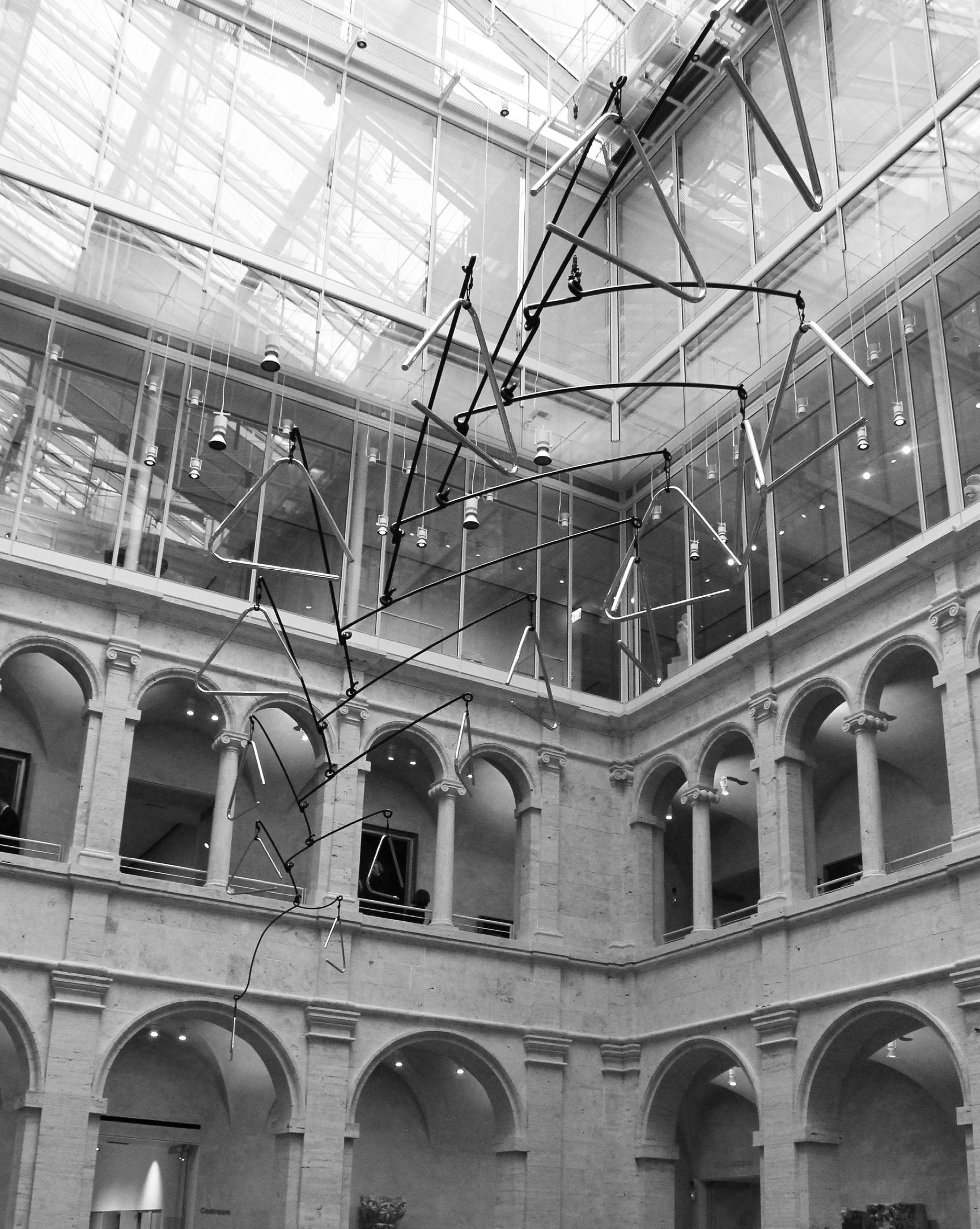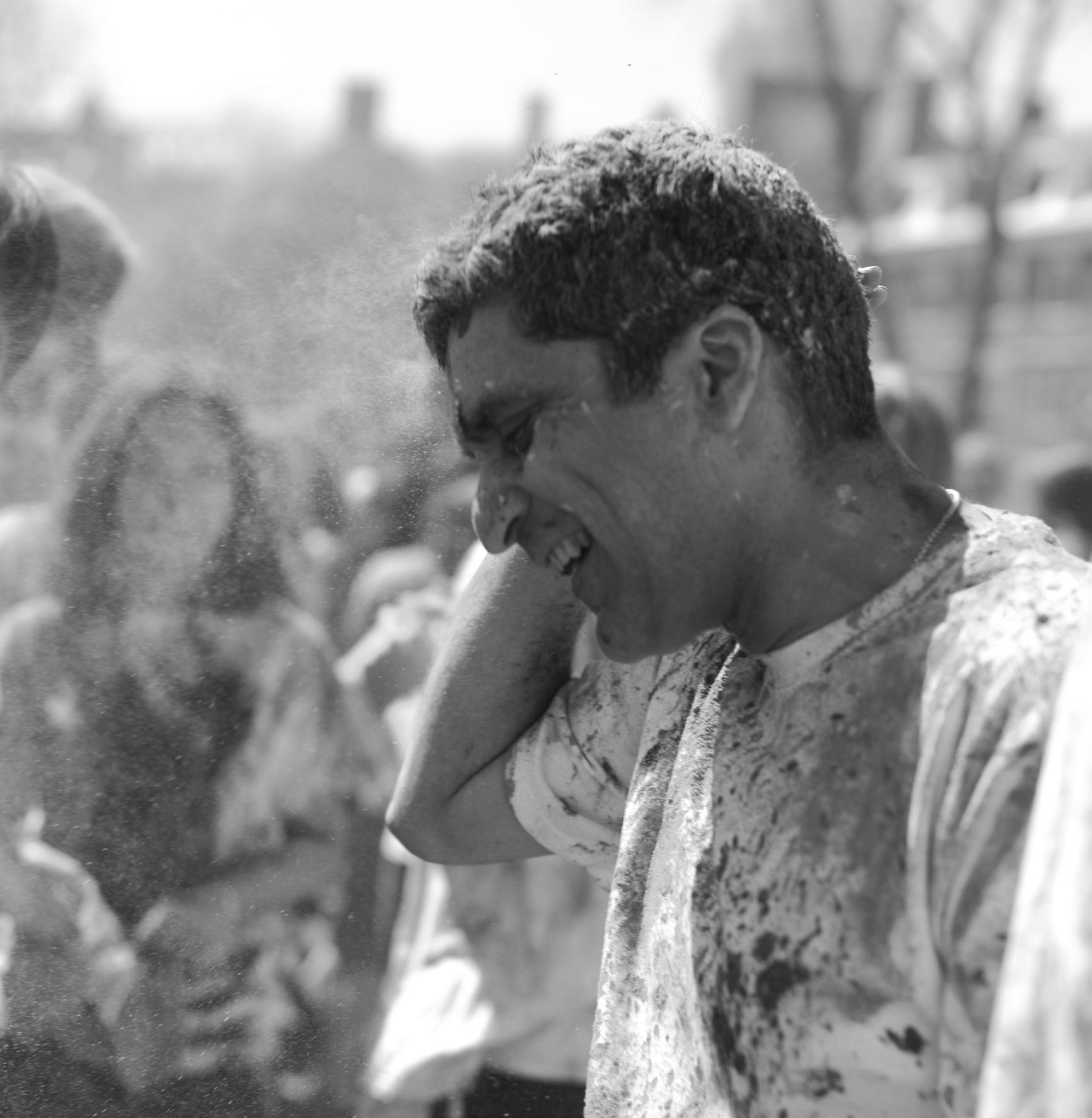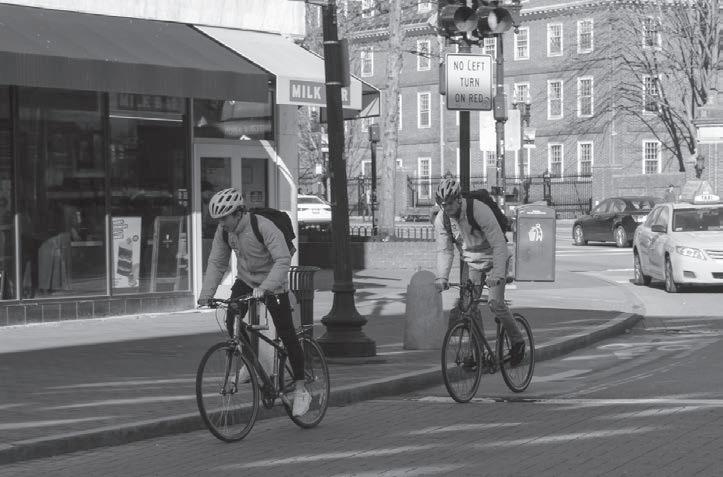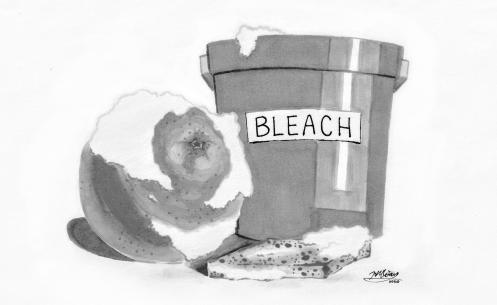
16 minute read
News
School of Public Health Hosts COVID-19 Forum
By Helen He and Alex M. koller Contri uting Writers
Public health experts convened to share information, updates, and advice for the public on the recent coronavirus out break during a Monday forum at the Harvard School of Public Health.
Health care journalist Ela na Gordon moderated the forum, which featured in-person panelists Paul D. Biddinger, the medical director of emergency preparedness at Massachusetts General Hospital, and School of Public Health professors Marc Lipsitch and Winnie Chi-Man Yip.
Hilary D. Martson, a policy advisor at the National Institute of Allergy and Infectious Dis eases, joined the forum remotely via video call in place of NIAID Director Anthony S. Fauci, who was originally slated to speak.
Coronavirus, also known as COVID-19, broke out in Wuhan, China, at the end of last year. More than 90,000 cases have been reported worldwide, and more than 3,000 people have died from the illness. Harvard restricted travel to Italy and Iran Saturday amid an outbreak of COVID-19 cases in the two countries. The University pre viously instituted travel restrictions to China and South Korea. Yip, who also serves as facul ty director of the China Health Partnership at the School of Public Health, discussed the Chinese government’s response to the outbreak at the event.
“China has been, I would call it, in a firefighting mode — lock ing down Wuhan, imposing very, very strict travel bans across the entire country, extending the Chinese New Year holiday,” Yip said. She added that these strate gies were consistent with expert recommendations at the time.
The panelists stressed the importance of expanding testing capacity to combat the outbreak. “Testing is really the biggest barrier we face,” Biddinger said. “I think trying to make sure we can know who does and who doesn’t potentially have the vi rus is going to be one of the most significant challenges in the healthcare system.”
Martson argued that, giv en the long time frame required to develop new vaccines, pub lic health measures may be the most reliable and timely re sponses in the interim.
“If everything moves as quickly as possible, the soonest that it could possibly be would be around one and a half to two years — that still might be very optimistic,” Martson said.
Lipsitch identified two “es sential” pieces of information researchers are focusing on to better understand COVID-19 transmission: the role children play in spreading the virus and the number of undetected cases.
Toward the end of the fo rum, the panelists emphasized the importance of cooperation and empathy over division in response to public fears and in stances of racism in wake of the pandemic. “We are all in this together,” Biddinger said. “We should be grateful for actions of the Chinese, the Italians, others who have delayed some of the spread to help us respond.”
“We should all recognize that we have a stake in responding effectively together, and that’s true in our neighborhoods as well as in the country and our global perspective,” he added. Throughout the event, panel ists reminded the audience of the level of uncertainty surrounding COVID-19 and urged them to be prepared for both progress and persisting unknowns.“I don’t think there is an easy yes-or-no answer to the question of wheth er we are prepared,” Biddinger said in an interview after the event. “I think we are absolute ly more prepared in the healthcare system than we have ever been and we are building on de cades of work, but we also have real capacity constraints.”
Virus From Page 1 HMS Professor Uses A.I. to Map Coronavirus Outbreak
Brownstein. The technology collects similar local data and uses it to create an extensive, publicly-available map of the outbreak.
The system updates in re al-time as it collects and processes data from the web. Researchers with HealthMap have partnered with organi zations including the World Health Organization and Cen ters for Disease Control and Prevention.
“It provides situational awareness so we get insights globally into what’s happen ing,” Brownstein said.
Brownstein said the sys tem’s goal is not only to identify cases, but also to gather infor mation on the public perception of disease outbreaks.
“The social media mining provides us with a perspective on how the population’s react ing to coronavirus and also rumors that people have around the disease,” Brownstein said. Brownstein founded HealthMap in 2006 with a team of epidemiologists, re searchers, and software developers.
Using novel sources of in formation, including Google searches, social media posts, blogs, and chat room inqui ries, the technology identifies markers of various infectious diseases and collects data for researchers and government agencies.
John S. Brownstein HMS Professor
Brownstein said the team created HealthMap to provide clear information on the pro gression of diseases.
He added that it has prov en effective in mapping many outbreaks over the past decade, such as swine flu and ebola.
“It was very challenging to get an accurate picture of what was happening around the world in terms of infec tious diseases. Either we didn’t know about events, or govern ments weren’t really reporting them, or it was information that was locked in a whole bunch of different information streams,” he said.
Using a combination of ma chine learning and crowdsourcing, HealthMap uses information from the web that epidemiologists do not typical ly use to track diseases, according to Brownstein.
“If you could organize that sort of information — scrape it, tag it, process it, and remove the noise — you could provide a view of emerging outbreaks in a way that hadn’t been shown before,” Brownstein said.
Brownstein added that the system can help researchers create complex projections on how diseases may spread.
“When a big event is identi fied, we spend a lot of time developing, tracking, and building situational awareness, and then feeding that data to make projections, whether that’s through connecting that data to transportation networks or understanding population mo bility. So feeding that information to help to form projections of risk,” he said.
virginia.ma@thecrimson.com
The T closes. We don’t.
Breaking news, 24/7.
The Crimson thecrimson.com
Rubio From Page 1 Sen Rubio Writes to SBA
in “over a decade,” and that Lieber has made “no contributions” to Quantum Dot technology, the sole piece of technology the company has been developing since 2013.
“Nanosys licensed nanow ire IP from Harvard developed by Dr. Lieber which we at tempted to develop in the early days of the company,” Hartlove wrote.
“We divested the nanowire IP and any remaining assets from that program in 2013.”
Rubio also wrote in the let ter requesting the probe that he believes universities need to appropriately vet their faculty, who are “competing and bid ding for these government resources.”
“I am also concerned about the seeming lack of appropri ate due diligence on the part of Harvard University to assess the ties their professors have with foreign entities,” Rubio wrote.
“It is imperative that the SBA is playing an active role, to the extent possible, in ensuring this due diligence occurs.”
University spokesperson Jonathan L. Swain declined to comment on Rubio’s letter.
According to experts, Lieb er’s arrest is part of an ongoing crackdown by the United States government and Amer ican universities on “academic espionage,” the transfer of ac ademic research at American universities to foreign govern ments.
Harvard has placed Lieb er on “indefinite” paid administrative leave and is cooperating with federal authorities while it conducts its own re view of his conduct, according to Swain.
Lieber was released from jail on $1 million bail on Jan. 31, but he remains barred from Harvard’s campus until fur ther notice.
james.bikales@thecrimson.com kevin.chen@thecrimson.com
Ba ow From Page 1 Bacow Stands by Disclosure Policy
recently launched investigations into “academic espionage” by faculty members, especially in connection with the Chinese government.
On Feb. 11, the U.S. Depart ment of Education launched an investigation into Harvard over its foreign funding from the gov ernments of China, Iran, Russia, Qatar, and Saudi Arabia.
Bacow said Monday that Har vard appropriately disclosed its foreign gifts, contracts, and grants “in a timely way” and in compliance with the law. He said the University is currently working on a response to the Ed ucation Department probe.
Bacow noted that there are a “variety of ways” in which Har vard safeguards its intellectual property, including filing patents and seeking judicial protections. He said the University does not conduct “classified re search” and that all of the research the school does is ultimately published.
In the interview, Bacow said he will continue to emphasize the importance of collaborat ing with “peers throughout the world.”
Lawrence S. Bacow University President
“I think that it’s important that we work with other insti tutions,” he said. “It’s important that we be open to students coming from throughout the world. It’s important that we en gage with faculty and scholars in different parts of the world. This is, in fact, how we succeed in addressing some of the great est challenges that we confront.”
michelle.kurilla@thecrimson.com jasper.goodman@thecrimson.com
City Council Passes Order on COVID-19
happen now — including support for the most vulnerable in our community.”
Hanage also referenced re search from Marc Lipsitch — another epidemiologist at HSPH— who estimated that around 40 to 70 percent of the world’s population will become infected.
“With optimistic esti mates of the mortality rate, that would translate to dozens of deaths in Cambridge alone, with many more severely ill and hospitalized,” Hanage told the council.
“We have a very narrow window to prepare — hopeful ly as much as months, but maybe as little as weeks, and you should act accordingly,” Han age added.
Nolan told the other coun cilors she hoped the city could work with Hanage on its re sponse to the virus.
“I really encourage us, if it’s appropriate, for us to reach out to people like him,” Nolan said. “I think if our Department of Public Health can be put in touch with him and include him in whatever work that we’re doing to ensure that we understand where this is go ing, it seems like that’s exactly the kind of resource that we are so lucky to have in the city,” she added.
Councilor Quinton Y. Zondervan said he is planning to hold a Health and Safety committee hearing to distrib ute more information on preparedness.
“We have to use all the channels of communication to make sure that people know what they can and should be doing to get ready, and really the simplest way to boil it down is personal hygiene, wash your hands, and be prepared,” Zondervan said.
“Have a plan for how you would stay at home and con duct your work if there was a quarantine for an extended pe riod of time,” he added.
camille.caldera@thecrimson.com
The latest on music, film, theater, and culture.

That’s artsy.
The Crimson thecrimson.com/arts
F From Page 1 Faculty Support Warren in Bid
primary, which former Vice President Joseph R. Biden Jr. won handily. Businessman Tom Steyer, former South Bend, Ind., Mayor Peter P. M. Buttigieg ’04 and Sen. Amy Klobuchar (D-Minn.) have dropped out of the race in the days since the sur vey closed.
SUPPORT
Beyond the top-line results, The Crimson’s survey provided in sight into the faculty’s political views along a variety of demo graphic lines.
According to the survey, Sanders is less popular among the top and bottom faculty in come brackets. The longtime Vermont senator has support from just 9.7 percent of facul ty members who earn north of $250,000 per year from the Uni versity. He holds the support of 9.1 percent of those who earn $40,000 per year or less from Harvard. He finds his strongest support among faculty mem bers who earn between $41,000 and $65,000, with 37.8 percent of respondents in that income bracket expressing their sup port.
Warren and Sanders re ceived strong support among surveyed faculty aged 25 to 35, at 41 percent and 35 percent, re spectively. Fifty-one percent of respondents aged 36 to 45 favored Warren, while Sand ers came in second in that age bracket at 21 percent. Support for the pair of progressives waned among faculty over 65, with Warren at 38 percent and Sanders at a mere 8 percent. Buttigieg, meanwhile, placed second among the oldest age bracket, receiving 19 percent of respondents’ support.
In addition to indicating sup port for Warren on The Crimson’s survey, FAS faculty also backed her with their wallets more than any other candidate in 2019, according to an analy sis of Federal Elections Commission data conducted by The Crimson.
The Crimson cross-refer enced all faculty members with FAS in their title in the Harvard Connections database with contributors who listed Har vard as their employer in 2019 FEC filings. According to that analysis, Warren received at least $19,666.59 from at least 28 Harvard faculty members. In 2019, Buttigieg — who dropped out of the Democratic race Sun day night — came in second with at least $7,091 in donations from FAS faculty.
An overwhelming majori ty of faculty members who took the survey broadly character ized their political leanings as “liberal” or “very liberal” — for ty-one percent of faculty responded they are “liberal,” and 38 percent said they are “very liberal.” Just four professors identified themselves as “con servative” or “very conservative.” A similar survey of the faculty in 2018 also found that the vast majority of respondents identified as “liberal” or “very liberal,” and a similarly large majority reported that they vot ed for Hillary Clinton in the 2016 presidential election.
ELECTABILITY
Despite indicating in large numbers that they planned to vote for Warren, faculty survey respondents were divided over which Democratic candidate they believe is most electable. The plurality of respondents, 30 percent, ranked Sanders as the “most likely to beat candidate President Donald Trump” on a question which garnered 246 responses.
A combined 53 percent of faculty believed one of the can didates on the left wing of the ideological spectrum — either Sanders or Warren — would be most likely to win in the general election. Former New York City Mayor Michael R. Bloomberg, who will appear on Democrat ic primary ballots for the first time Tuesday, ranked third on electability among surveyed faculty at 17 percent, followed by Biden at 11 percent.
Opinions on electability also diverged along lines of age. Fif ty-six percent of respondents aged 25 to 35 believed Sanders to be the most electable, while only 14 percent of respondents aged over 65 felt the same. A plurality of surveyed faculty over 65 believed Bloomberg to be the most electable, at 31 per cent.
Nationally, Democratic pri mary voters say electability is one of the most important fac tors in selecting a nominee to face Trump in the general elec tion. Just four major candidates — Warren, Sanders, Biden, and Bloomberg — remain in the Democratic race ahead of to day’s pivotal Super Tuesday contests.
METHODOLOGY
For its 2020 Faculty Survey, The Crimson collected elec tronic responses through Qualtrics, an online survey platform, from Feb. 20 to 27, 2020. A link to the anonymous survey was sent to 1,341 FAS and SEAS fac ulty members through emails sourced in October 2019 from Harvard directory informa tion. The pool included individuals on Harvard’s Connections database with FAS titles, including emeritus, tenured, tenure-track, and non-tenuretrack faculty.
Of those faculty, 476 ac cessed the link to the survey. A total of 416 participants an swered at least one question, while 263 participants complet ed every question in the survey. To prevent participants from accidentally taking the sur vey more than once, The Crimson enabled Qualtrics’ browser cookie functionality to register unique survey sessions on each device. This device data is con trolled by Qualtrics, and The Crimson does not retain infor mation that could identify devices accessing the survey with anonymous responses.
In an effort to check for re sponse bias, The Crimson compared respondent demo graphics with publicly available information on faculty demographics provided by the University — information re garding gender, minority background, SEAS affiliation, and ladder versus non-ladder sta tus. Overall, respondent demographics tracked with faculty demographics.
Of survey respondents, 41 percent identified themselves as women and 20 percent iden tified themselves as minorities. Based on data in the 2019 FAS Dean’s Annual report, women and minorities make up 39 per cent and 24 percent of FAS ladder faculty, respectively.
According to the Dean’s re port, 41 percent of the FAS were non-ladder faculty — a term synonymous with non-tenuretrack faculty. By contrast, 39 percent of respondents to The Crimson’s survey identified themselves as non-ladder fac ulty. Of faculty who were sent the link to the survey, 127 — or 9 percent — are affiliated with SEAS. In comparison, of re spondents who indicated their divisional affiliation on the sur vey, 7 percent reported an affiliation with SEAS.
james.bikales@thecrimson.com jasper.goodman@thecrimson.com
Transformative coverage.
IOP Hosts Forum Nuclear Energy
By N L. k contri uting writer
Former U.S. Secretary of Energy Ernest J. Moniz and former Dep uty Secretary of Energy Daniel B. Poneman ’78 discussed the importance of nuclear energy in an event moderated by Har vard Kennedy School Professor Meghan L. O’Sullivan at the In stitute of Politics Monday night. Moniz, an MIT physics pro fessor who served as Energy Secretary during the second term of the Obama administra tion, and Poneman, who served as the department’s deputy sec retary during the Obama administration, spoke about nuclear energy as an essential power source.
Moniz said nuclear energy, in addition to renewable resourc es like wind and solar power, will be necessary as the United States attempts to move toward a net-zero carbon output.
Both Moniz and Poneman said carbon reductions through the use of renewable energy alone are not sufficient for cur rent energy demands.
Moniz cited California as an example of the infeasibility of relying on renewable resourc es alone, with not enough wind and sun to generate adequate re newable energy in the state yearround.
“We just don’t have [storage] today in renewables,” Moniz said. “We do have it today in nat ural gas.”
Poneman spoke about his be lief in nuclear energy as a potential solution to energy demands as well as multiple other national and international issues.
“There’s serious interest – a bipartisan interest – in pro moting nuclear energy as a response to climate change and also as a response to the need for U.S. leadership on other issues we’ll talk about, like national se curity and non proliferation,” Poneman said. “But it’s going to be a slog, there’s no question about it,” Poneman added.
Both Poneman and Moniz also stressed the importance of forming coalitions, both in ternally and internationally, around the issue of nuclear pow er.
“There are some people who think climate change is a hoax, but they might think the United States needs to be a great leader in nuclear energy because of our global influence,” Poneman said. “There might be some people who really don’t care about the global world but worry about the climate change.”
Daniel B. Poneman ’78 Former Dep. Energy Sec.
He added that nuclear pow er in the United States appears to be waning as other countries like South Korea and China in crease their use of nuclear power.
“We still have a leadership role to play,” he said. “But the leadership role we want to enjoy has significantly eroded.”
Duncan O. Glew ’23 said he attended the event to learn more about nuclear energy. “This is one of the areas of American politics and government that I’m just not as much of an expert on, and I just want to learn about our energy infrastructure and how nuclear fits into that,” he said.





